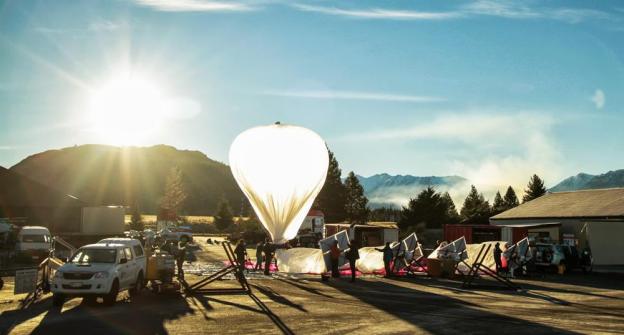
Detailed on the Official Google Blog this week, the search company announced an ambitious plan to bring Internet access to a large portion of the world’s population that either can’t afford Web access or is located in a completely remote area without an ISP. Called Project Loon, Google is looking to the sky for the answer rather than a wired network on the ground. Launching a collection of giant balloons with network hardware attached, these balloons float approximately 20 kilometers (12.4 miles) in the air being pushed by winds moving within the stratosphere.
After the Project Loon balloons are launched in the air, the network devices attached to the balloons communicate with a specialized Internet antenna that’s attached to someone’s home. Each balloon is also communicating with the other balloons in the air and this network is relaying an Internet connection from a local ISP in the area. The network devices on the Project Loon balloons have been designed to filter out all other signals in the area and specifically focus on delivering Internet connectivity to users on the ground.
Regarding the safety of launching and operating a network of balloons all over the Earth, the team communicates with air traffic control in the area to let them know when a new batch of balloons is being launched. In addition, air traffic control is notified when the Project Loon balloons are on the way down and the team can accurately predict where a balloon will end up landing. The balloons are floating approximately twice as high as the path of a typical commercial flight, so there’s no chance a plane will run into a balloon. In fact, you will need a telescope to spot one of these Project Loon devices in the air.
Regarding speed, Google is aiming for download and upload speeds that are compatible to a typical 3G cellular network. While someone on the ground won’t be playing games on Xbox Live or video chatting on Skype, they will be able to check email, surf the Web and experience a world of connectivity that simply wasn’t available to them. For instance, people living in rural, remote areas would be able to communicate during natural disasters and gain immediate access to weather data and other current events.
According to an interview in Wired, the polyethylene balloon material is only three-thousands of an inch thick, but can handle the pressure at high altitudes. Weighing in at about 22 pounds, the balloons are carrying computers, GPS hardware and other electronics. There are also solar panels mounted on the platform, specifically designed to keep large batteries charged up all the time to power everything. In addition, the team has included a transponder to help air traffic control keep track of a balloon’s position.
For the time being, the team handling Project Loon is limiting the pilot test of the service to fifty residents of New Zealand. Assuming the project is successful, the team wants to find other countries around the world to partner with in order to launch more balloons and increase the reach of the network.


